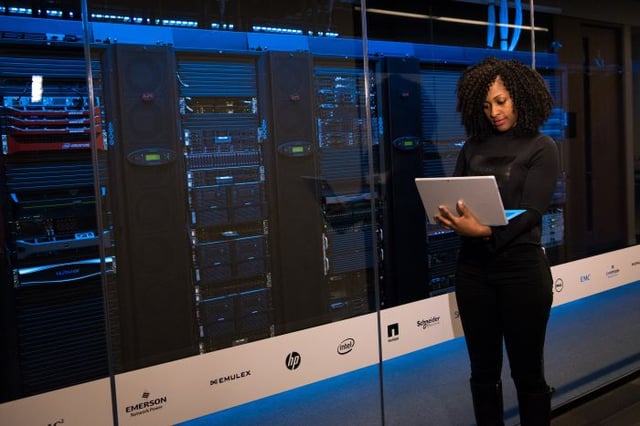
Calculating the ROI of IT Asset Management

The first 64-bit ARM servers are about to hit the channel, leading many to suspect a broad conversion to the new low-power architecture across the data center. But is that likely? And if so, will it be a positive or a negative development for data users and the enterprise?
HP announced this morning that the new ProLiant m400 will feature Applied Micro’s X-Gene SoC, a 64-bit solution that features eight ARMv8 cores running at 2.4 GHz. This is actually HP’s second choice for a server-class ARM – the project had to regroup following the loss of Calxeda nearly a year ago. The X-Gene also sports four DDR3 memory channels and a 10 GbE interface, giving it ample resources to handle high-speed, highly dynamic workloads. Its current development path includes a bump to 16 2.8 GHz cores and RDMA over Converged Ethernet (ROCE) within the year, followed by a 3 GHz solution and 16 nm FinFet transistor design after that. At the same time, HP is out with a new 32-bit ARM server built around Texas Instrument’s Keystone SoC.
Of course, the overwhelming majority of HP’s server portfolio is still solidly behind Intel and the Xeon processor in particular, but the advent of 64-bit ARM machines cannot be good news for Santa Clara. The company is responding with the Xeon E5v3 that offers up to 18 cores per socket, DDR 4 memory and up to 45 MB of L3 cache. Plus, the design features a unique gating mechanism that can shift loads toward and away from individual cores in order to maximize both performance and power efficiency. What’s more, Intel is introducing new thread management and software development tools to ensure that its chips are not only powerful but can handle the kinds of workloads that the enterprise generates.
Still, it is fair to say that some market penetration is likely, particularly as new ARM solutions emerge from the lab. The thing to keep in mind, though, is that not all configurations are equal, even if they use standard architectures like the v8. AMD’s Opteron A1100, for example, provides eight 64-bit cores, plus another A5 core that supports legacy peripheral devices. Cavium’s ThunderX offers up to 48 cores connected via the Cavium Coherent Processor Interconnect (CCPI) that is said to provide up to 1 TB of cache across dual sockets. In an age when hardware can be highly tailored to specific workloads, the selection of specific processor configurations will be crucial, even if the infrastructure is hosted on a third-party cloud.

This is why software companies are forging stronger ties to chip makers these days, especially those that show promise in the data center. For example, Red Hat recently launched a partner program for 64-bit ARM providers as a way to build broader support for its open OS platforms and related toolsets. The program has already drawn AMD, Applied Micro and Cavium, as well as leading server manufacturers like Dell and HP. When underlying hardware is undergoing a significant revamp, the time is ripe for software developers to gain significant market share.
The question, though, is how big ARM’s penetration into the data center market will be. When it comes to web-facing, hyperscale environments, the gains could be significant. Thousands of low-power ARMS will be more adept at moving the high-speed, high-packet workloads that characterize ecommerce and mobile data. But there is still plenty of life left in raw number crunching and traditional application environments where a single, hefty processor holds the most sway.
The trick, as I mentioned, is to make sure that the right workloads are finding their way to the right hardware. But this is going to take a level of visibility and data automation that many organizations are still struggling to achieve.
Arthur Cole writes about infrastructure for IT Business Edge. Cole has been covering the high-tech media and computing industries for more than 20 years, having served as editor of TV Technology, Video Technology News, Internet News and Multimedia Weekly. His contributions have appeared in Communications Today and Enterprise Networking Planet and as web content for numerous high-tech clients like TwinStrata, Carpathia and NetMagic.












